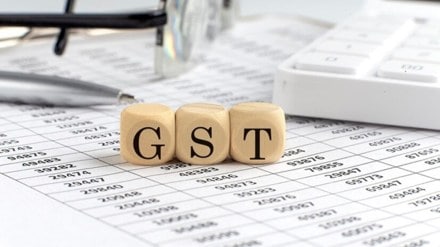Paving the way for an overhaul of the eight-year-old goods and services tax (GST) regime, a group of ministers on rate rationalisation has given its nod to the Centre’s proposal for a reduction in tax slabs and rates, even as some opposition-ruled state sought compensation for revenue losses.
This is a shot in the arm for the Centre, as several analysts were expecting Opposition-ruled states to show dissidence, as the proposed GST reset includes rate cuts on a number of items, with revenue implications not quantified. Prime minister Narendra Modi in his I-Day speech has announced the much-needed reform, and flagged it as a Diwali gift to the people in the form of lower taxes on everyday use items. Then reforms have three pillars- structural improvement, simplification and ease of living.
Apart from streamlining the multiple slabs under GST into a two-pillar structure of 5% and 18%, the proposal intends to levy a special rate of 40% on sin and luxury goods. The existing rates 12% will and 28% will be abolished.
While sin and luxury items, attracting 28% tax now, will be facing the 40% tax, most of the items under the 12% slab, like certain packaged food, will be brought down to the 5% bracket.
States Voice Concerns Over Revenue Losses
“Every member expressed his/her views on the Centre’s proposals. We have supported the proposals and referred the proposal to the GST Council, which will decide on this,” Bihar deputy chief minister and GoM convenor Samrat Choudhary said. The Council will likely meet next month to consider the proposals threadbare in time for the new rates takes effect much before Diwali (October 20).
Supporting the “pro-people proposals,” West Bengal finance minister Chandrima Bhattacharya said, the Centre should also tell the states about the likely revenue losses and how these would be compensated.
“We have no problem with pro-people proposals. We also have to think of how to recoup the losses. The Centre must quantify whatever losses are due to the rate reductions,” she said. Bhattacharya added that GoM did not take up item-wise discussion, as this could rather be done by the Council.
The Centre’s proposed GST reforms with a two-tier structure may lead to a Rs 60,000 crore annualiased revenue loss, officials had told FE earlier, but they added that the actual impact could be short-lived as rate cuts boost consumption and compliance. Also, the central government have indicated about a special impost on sin items like tobacco, so that the tax incidence on them is unchanged. Arbind Modi, noted tax expert, said: “The general principle is that excise duty should reflect the full cost of negative externalities.”
The Financial Impact of the Rate Cuts
SBI Research, in a report, said it expects a revenue loss of around Rs 1.1 lakh crore in one scenario and around Rs 60,000 crore in another scenario per annum due to GST rationalisation. Thus, the average revenue loss is at Rs 85,000 crore, it said.
“Every member supported the Centre’s proposals, which are in the interest of people,” Uttar Pradesh finance minister Suresh Khanna said, adding that there was a demand that states be compensated for revenue losses.
Bhattacharya said since in the current GST laws limits the GST rate to maximum 40%, some mechanism has to be worked out to ensure that the current tax incidence (including compensation cess) on sin and luxury goods is retained even after the proposed removal of the cess by November.
“I have suggested that Section 9, Subsection 1 (of GST Act) needs to be amended, to put a special schedule for a full additional duty (on top of 40% GST) to replace the compensation cess,” Bhattacharya said.
The current tax incidence (GST plus cess) on sin items—tobacco, cigarettes and pan masala—varies widely – from 60-80% in some cases to as high as around 160-200%, for items like gutka.
Telangana and Punjab have also sought compensation for losses due to the proposed GST reforms.
“Besides sin goods, the tax incidence on high-end luxury cars now is as high as 48% including cess. So, the revenue implications are too high to let go of the tax incidence even on these luxury cars,” said Rahul Renavikar, Managing Director, Acuris Advisors.
Besides Chaudhary, Bhattacharya and Khanna, the six-member GoM also includes Kerala finance minister K N Balagopal, Karnataka revenue minister Krishna Byre Gowda and Rajasthan medical and health minister Gajendra Singh.
